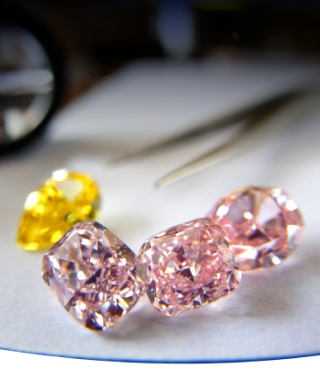In recent years, the fancy color community witnessed a shift that altered every part of its territory and slowly became familiar to the entire industry: the migration of white diamond companies’ capital toward fancy color diamonds. Newcomers to this segment disrupted the balance of power, a sector that was dominated by veteran fancy color hegemony for decades.
The impact of this market shift is felt on several fronts: purchasing polished goods, bidding on rough in tenders and finally, pricing.
Purchasing Polished Goods
The market shifted a critical mass of wholesalers from white diamonds to fancy color approximately 3-5 years ago. A shortage of high quality fancy color diamonds at the wholesale level has occurred, due to the increase of players in this segment. A data supplier to the Fancy Color Diamond Index, who chose to remain anonymous, stated “In my opinion, white diamond wholesalers cannot make too much of a profit so this is the second best alternative. In the past few years, a lot of people have shifted due to the fact that the white market, profit margin is so tight.” Although, according to Leibish Polnauer, the president of Leibish & Co., “The number of qualified players in fancy color is still small.”
Unlike white diamonds, fancy color is highly nuanced and subjective; each stone is evaluated separately and one is incomparable to another. In an effort to get their feet wet in the market, newcomers to the fancy color segment have overpaid for goods. “The smart wholesalers are doing a lot of business with trusted partners. That way, they reduce risk when purchasing and maximize potential selling outlets. As they enter the market, some of the younger fancy color diamond buyers tend to be more willing to pay a higher market price for a nice stone. It helps them get established with the limited suppliers of these stones,” said Martin Georgiadis of Dorset Diamonds. Though there are exceptions, many diamond dealers from the colorless world have little knowledge about the real value of fancy color diamonds, leading them to miscalculate the value of fancy color stones.
Bidding On Rough at Tenders
The atmosphere at fancy color diamond tenders has markedly changed. A greater number of diamond wholesalers are buying fancy color rough, in contrast to several years ago when it was a significantly smaller circle. “There are definitely more bidders at the rough diamond tenders,” said Leibish, who noticed the dramatic change. Given the current mood in the market, he added, “Goods in rough and polished will continue to rise further.”
In recent years, we’ve seen fancy color rough sell for surprisingly high prices. Wholesalers have reported overpaying when buying stones at tenders. “Newcomers are so keen to get their hands on fancy color rough that they tend to be overly optimistic in regard to the potential value of the stone and they end up paying much more. Sometimes it can be double the price,”said Eden Rachminov of Rachminov Diamonds 1891.
Effect On Pricing
Naturally, in every industry’s dynamic there are pros and cons. Newcomers may not understand quality as well as seasoned fancy color professionals, occasionally overpay or invest in mediocre stones and offer less-than-ideal stones to retailers, which can be problematic for customers. In spite of these concerns, their presence creates significant demand in the market. As a result there are many more wholesalers holding fancy color inventory and the effect is greater awareness, distribution and stability in fancy color prices.


